Teachable Moments| January 8, 2021
NASA's Perseverance Rover Lands on Mars
Learn how, why, and what Perseverance will explore on Mars, plus find out about an exciting opportunity for you and your students to join in the adventure!
In the News
On Feb. 18, NASA's Perseverance Mars rover touched down on the Red Planet after a seven-month flight from Earth. Only the fifth rover to land on the planet, Perseverance represents a giant leap forward in our scientific and technological capabilities for exploring Mars and the possibility that life may have once existed on the Red Planet.
Here, you will:
- Meet the Perseverance Mars rover and find out what it's designed to do.
- Learn about an exciting opportunity to get your classroom, educational organization, or household involved with the Mission to Mars Student Challenge.
Why It's Important
You might be wondering, "Isn't there already a rover on Mars?” The answer is yes! The Curiosity rover landed on Mars in 2012 and has spent its time on the Red Planet making fascinating discoveries about the planet's geology and environment – setting the stage for Perseverance. So, why send another rover to Mars? The lessons we’ve learned from Curiosity coupled with advancements in technology over the last decade are allowing us to take the next big steps in our exploration of Mars, including looking for signs of ancient microbial life, collecting rock samples to bring to Earth one day, and setting the stage for a potential future human mission to the Red Planet.
More specifically, the Perseverance Mars rover has four science objectives:
- Identify past environments on Mars that could have supported microbial life
- Seek signs of ancient microbial life within the rocks and soil using a new suite of scientific instruments
- Collect rock samples of interest to be stored on the surface for possible return by future missions
- Pave the way for human exploration beyond the Moon
With these science objectives in mind, let's take a look at how the mission is designed to achieve these goals – from its science-rich landing site, Jezero Crater, to its suite of onboard tools and technology.
How It Works
Follow the Water
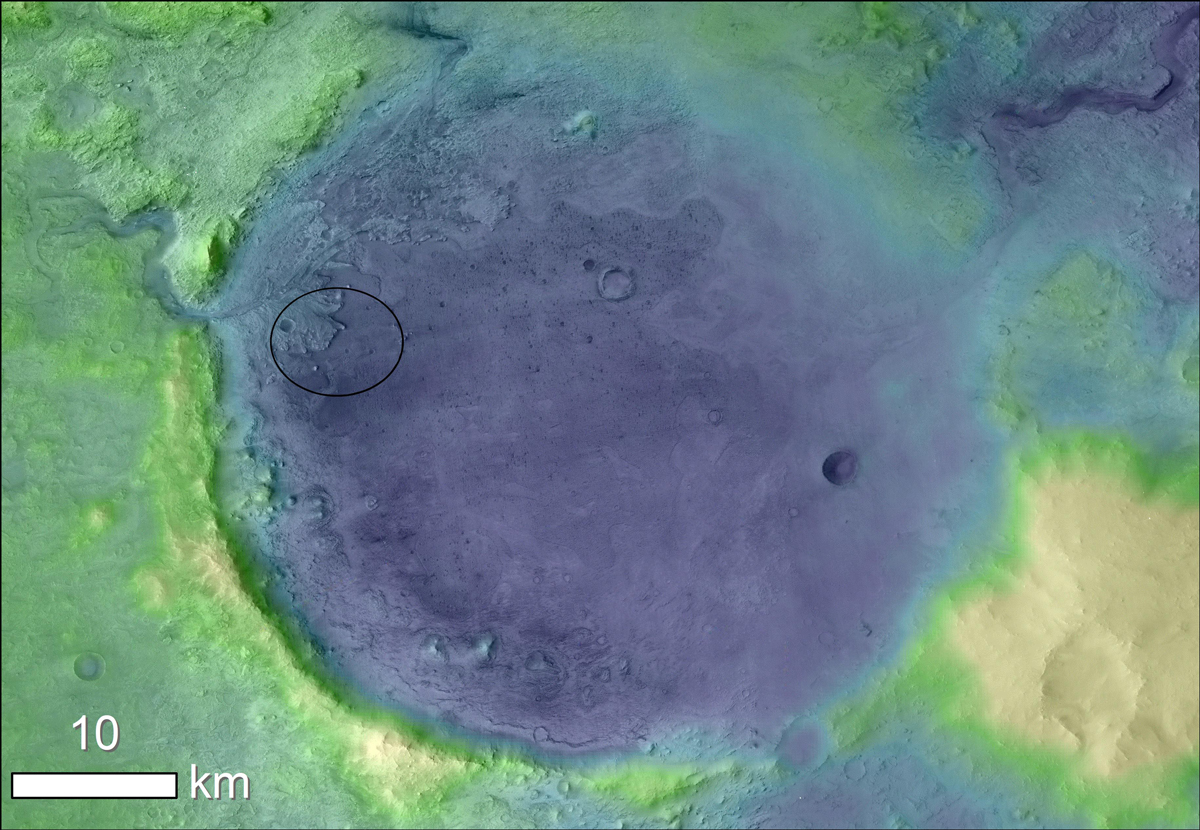
Lighter colors represent higher elevation in this image of Jezero Crater on Mars, the landing site for the Perseverance rover. The black oval indicates the area in which the rover will touch down, also called a landing ellipse. Image Credit: NASA JPL/Caltech/MSSS/JHU-APL/ESA | › Full image and caption
While present-day Mars is a cold, barren planet, science suggests that it was once very similar to Earth. The presence of clay, dried rivers and lakes, and minerals that formed in the presence of water provide extensive evidence that Mars once had flowing water at its surface. As a result, a mission looking for signs of ancient life, also known as biosignatures, should naturally follow that water. That’s because water represents the essential ingredient for life as we know it on Earth, and it can host a wide variety of organisms.
This is what makes Perseverance's landing site in Jezero Crater such a compelling location for scientific exploration. The crater was originally formed by an ancient meteorite impact about 3.8 billion years ago, and it sits within an even larger, older impact basin. The crater also appears to have once been home to an ancient lake fed by a river that formed the delta where Perseverance will begin its exploration, by exploring the foot of the river delta.
Take a tour of Perseverance's landing site in this animated flyover of the Martian surface. Credit: NASA/JPL-Caltech | Watch on YouTube
Tools of the Trade
Perseverance will begin its scientific exploration with the assistance of an array of tools, also known as science instruments.

This artist's concept shows the various science tools, or instruments, onboard the rover. Image credit: NASA/JPL-Caltech | › Learn more about the rover's science instruments
Like its predecessor, Perseverance will have a number of cameras – 23, in fact! – serving as the eyes of the rover for scientists and engineers back on Earth. Nine of these cameras are dedicated to mobility, or tracking the rover's movements; six will capture images and videos as the rover travels through the Martian atmosphere down to the surface, a process known as entry, descent, and landing; and seven are part of the science instrumentation.
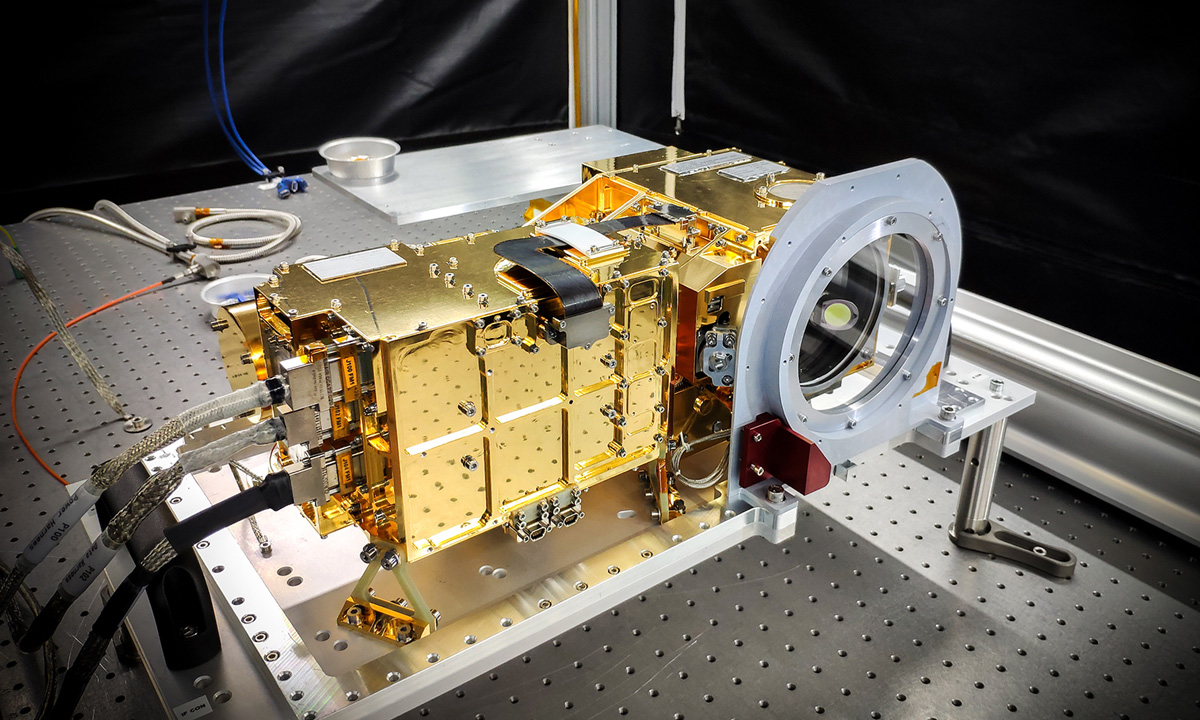
SuperCam's mast unit before being installed atop the Perseverance rover's remote sensing mast. The electronics are inside the gold-plated box on the left. The end of the laser peeks out from behind the left side of the electronics. Image credit: CNES | › Learn more about SuperCam

PIXL can make slow, precise movements to point at specific parts of a rock's surface so the instrument's X-ray can discover where – and in what quantity – chemicals are distributed in a given sample. This GIF has been considerably sped up to show how the hexapod moves. Image credit: NASA/JPL-Caltech | › Learn more about PIXL
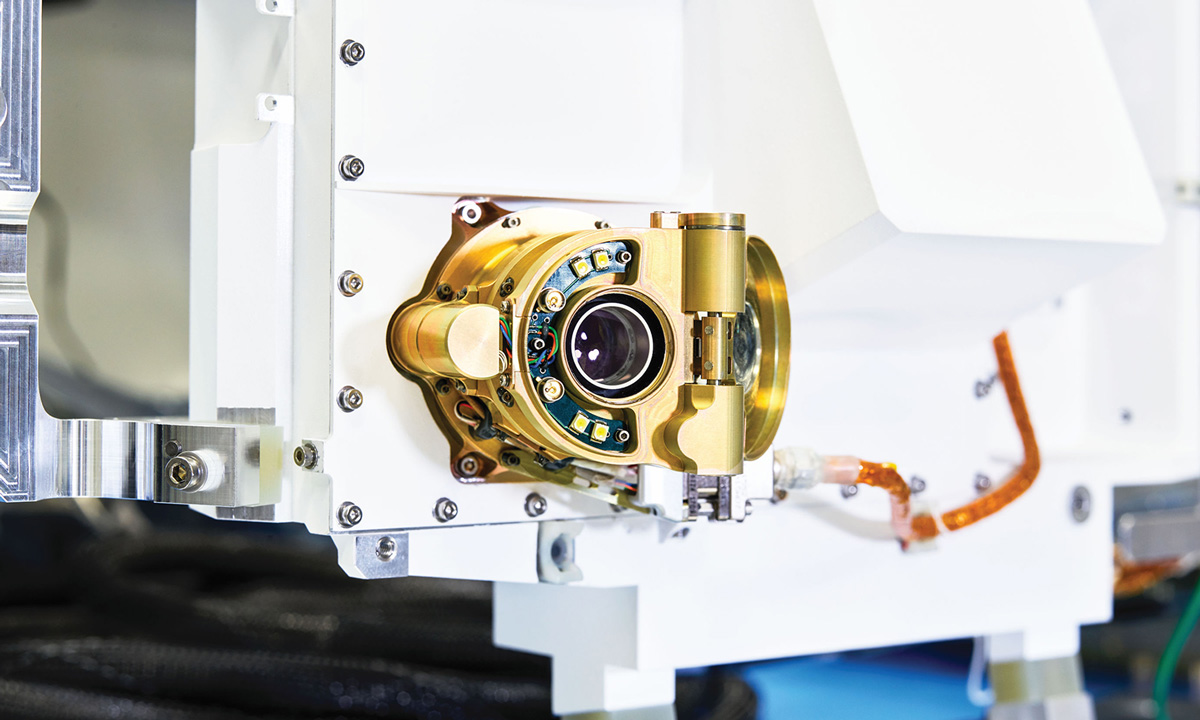
A close-up view of an engineering model of SHERLOC, one the instruments aboard NASA's Perseverance Mars rover. Credit: NASA/JPL-Caltech | › Learn more about SHERLOC
Navcam, located on the mast (or "head") of the rover, will capture images to help engineers control the rover. Meanwhile, Mastcam-Z, also on the rover’s mast, can zoom in, focus, and take 3D color pictures and video at high speed to allow detailed examination of distant objects. A third camera, Supercam, fires a small laser burst to excite compounds on the surface and determine their composition using spectroscopy. Supercam is also equipped with a microphone. This microphone (one of two on the rover) will allow scientists to hear the pop the laser makes upon hitting its target, which may give scientists additional information about the hardness of the rock.
Leaning more toward chemistry, the Planetary Instrument for X-Ray Lithochemistry (PIXL) will allow us to look at the composition of rocks and soil down to the size of a grain of salt. Elements respond to different types of light, such as X-rays, in predictable ways. So by shining an X-ray on Martian rocks and soil, we can identify elements that may be part of a biosignature.
Meanwhile, a device called SHERLOC will look for evidence of ancient life using a technique called Deep UV Raman spectroscopy. Raman spectroscopy can help scientists see the crystallinity and molecular structure of rocks and soil. For example, some molecules and crystals luminesce, or emit light, when exposed to ultraviolet – similar to how a blacklight might be used to illuminate evidence in a crime scene. Scientists have a good understanding of how chemicals considered key to life on Earth react to things like ultraviolet light. So, SHERLOC could help us identify those same chemicals on Mars. In other words, it can contribute to identifying those biosignatures we keep talking about.
Rounding out its role as a roving geologist on wheels, Perseverance also has instruments for studying beneath the surface of Mars. An instrument called the Radar Imager of Mars Subsurface Experiment (RIMFAX) will use ground-penetrating radar to analyze depths down to about 100 feet (30 meters) below the surface. Mounted on the rear of the rover, RIMFAX will help us understand geological features that can't be seen by the other cameras and instruments.
The rover's suite of instruments demonstrates how multiple scientific disciplines – chemistry, physics, biology, geology, and engineering – work in concert to further our understanding of Mars and help scientists uncover whether life ever existed on the Red Planet.
Next Generation Tech
At NASA, scientists and engineers are always looking to push the envelope and, while missions such as Perseverance are ambitious in themselves, they also provide an opportunity for NASA to test new technology that could be used for future missions. Two excellent examples of such technology joining Perseverance on Mars are MOXIE and the first ever Mars helicopter, Ingenuity.

Members of Perseverance mission team install MOXIE into the belly of the rover in the cleanroom at NASA's Jet Propulsion Laboratory in Southern California. Image credit: NASA/JPL-Caltech | › Full image and caption
MOXIE stands for the Mars Oxygen In-Situ Resource Utilization Experiment. Operating at 800 degrees Celsius, MOXIE takes in carbon dioxide (CO2) from the thin Martian atmosphere and splits those molecules into pure oxygen using what is called a catalyst. A catalyst is a chemical that allows for reactions to take place under conditions they normally wouldn’t. MOXIE provides an incredible opportunity for NASA to create something usable out of the limited resources available on Mars. Over the duration of the rover's mission, MOXIE will run for a total of one hour every time it operates, distributed over the course of the prime mission timeframe, to determine whether it can reliably produce breathable oxygen. The goal of operating this way is to allow scientists to determine the performance across a variety of environmental conditions that a dedicated, human-mission-sized oxygen plant would see during operations - day versus night, winter versus summer, etc. Oxygen is of great interest for future missions not just because of its necessity for future human life support on Mars, but also because it can be used as a rocket propellant, perhaps allowing for future small-scale sample return missions to Earth.
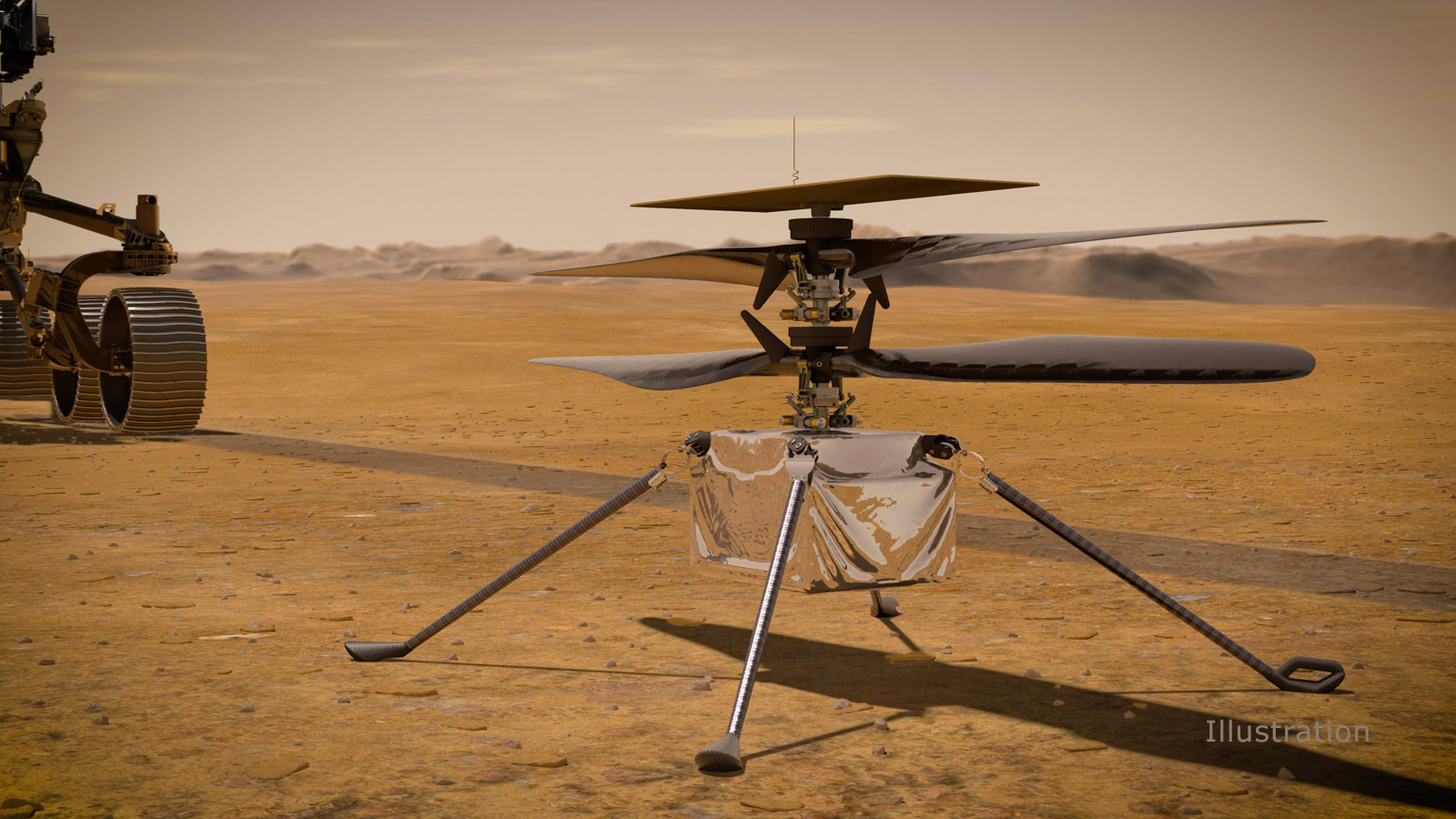
This artist's concept shows Ingenuity, the first Mars helicopter, on the Red Planet's surface with Perseverance (partially visible on the left) in the distance. Image credit: NASA/JPL-Caltech | › Full image and caption
The Mars Ingenuity helicopter is likewise an engineering first. It is a technology demonstration to test powered flight on Mars. Because the Martian atmosphere is so thin, flight is incredibly difficult. So, the four-pound (1.8-kilogram), solar powered helicopter is specially designed with two, four-foot (1.2-meter) long counter-rotating blades that spin at 2,400 rotations per minute. In the months after Perseverance lands, Ingenuity will drop from the belly of the rover. If all goes well, it will attempt test flights of increasing difficulty, covering incrementally greater heights and distances for about 30 days. In the future, engineers hope flying robots can allow for a greater view of the surrounding terrain for robotic and human missions alike.
Teach It
Take part in a worldwide “teachable moment” and bring students along for the ride as NASA lands the Perseverance rover on Mars February 18. Science communicator and host of “Emily’s Wonder Lab” on Netflix, Emily Calandrelli, shares how you can join the adventure with your students! | Register on Eventbrite
The process of landing on Mars with such an advanced mission is no doubt an exciting opportunity to engage students across all aspects of STEM – and NASA wants to help teachers, educators and families bring students along for the adventure with the Mission to Mars Student Challenge. This challenge will lead students through designing and building a mission to Mars with a guided education plan and resources from NASA, listening to expert talks, and sharing student work with a worldwide audience.
Learn more about the challenge and explore additional education resources related to the Perseverance Mars rover mission at https://go.nasa.gov/mars-challenge
Watch the Landing
The next chapter of Perseverance’s journey takes place on Feb. 18 at 12 p.m. PST (3 p.m. EST), when the mission reaches Mars after seven months of travelling through space. Join NASA as we countdown to landing with online events for teachers, students, and space enthusiasts! The landing day broadcast can be seen on NASA TV and the agency's website starting at 11:15 a.m. PST (2:15 p.m. EST). For a full listing of online events leading up to and on landing day, visit the mission's Watch Online page.
Follow landing updates on NASA's Twitter, Facebook and Instagram accounts.
Explore More
-
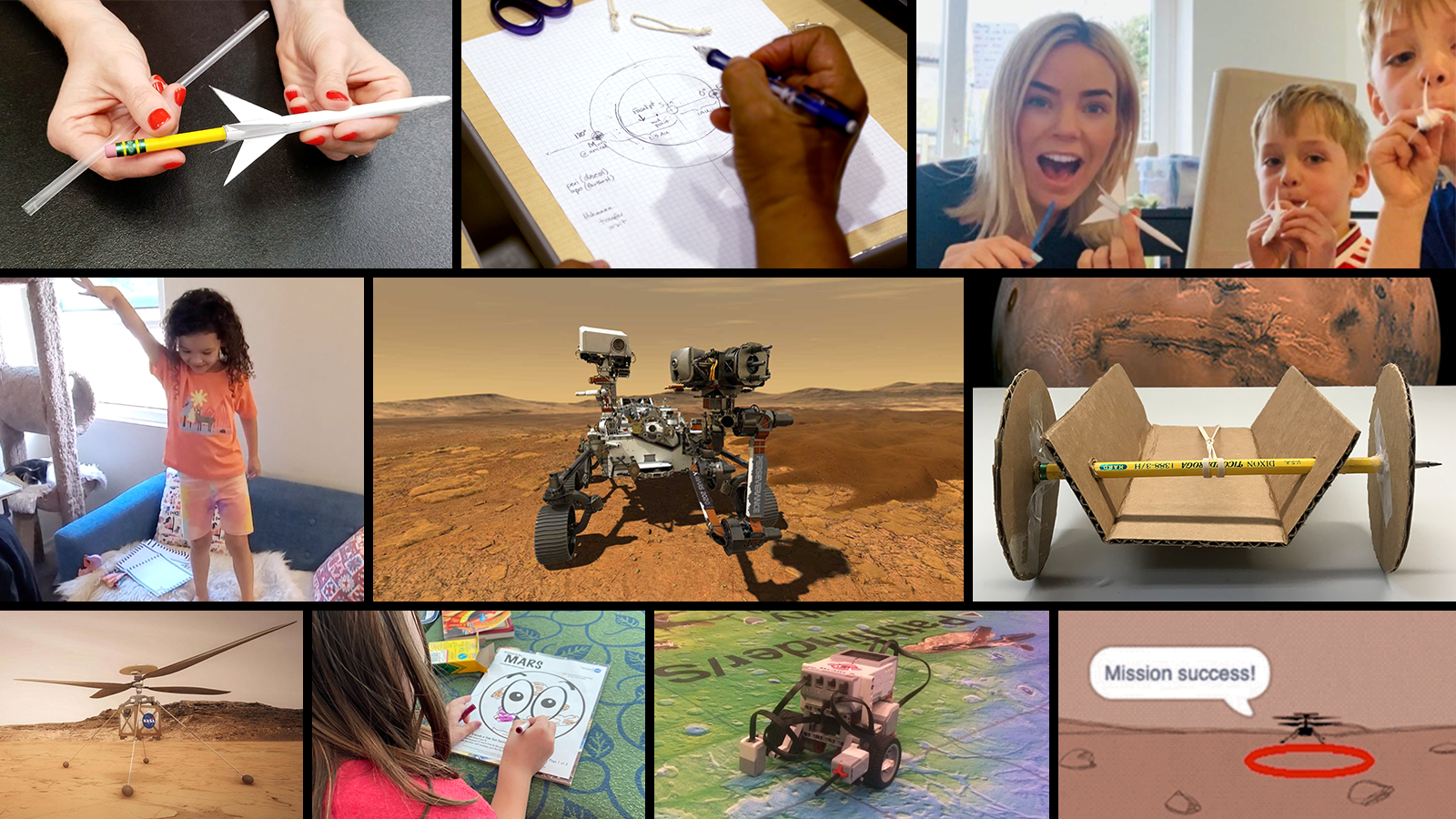
NASA's Mission to Mars Student Challenge
Take part in a worldwide "teachable moment" and bring students along for the ride as NASA lands a rover on Mars February 18!
-
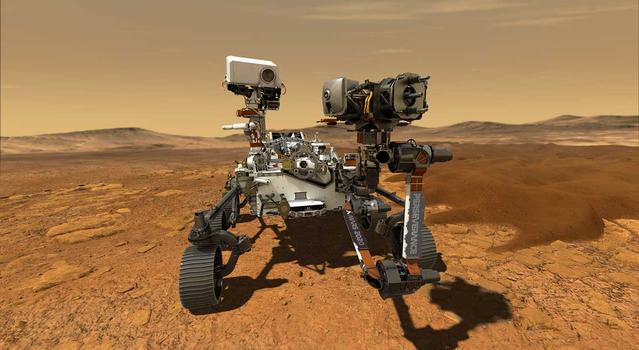 Teachable Moment
Teachable MomentMeet Perseverance, NASA's Next Mars Rover
Find out how the rover has been "souped up" with science instruments, cameras and technologies to explore Mars in new ways – plus, what to expect on launch day.
-
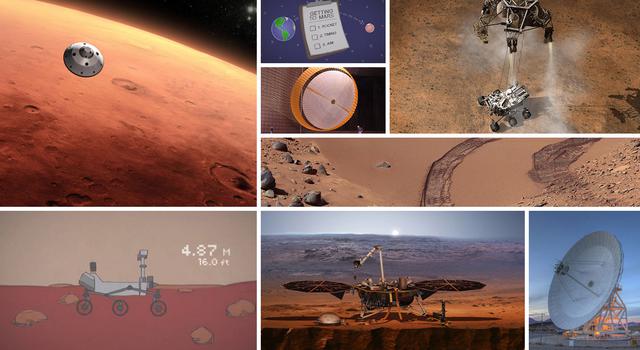
Mission to Mars Unit
In this standards-aligned unit, students learn about Mars, design a mission to explore the planet, build and test model spacecraft and components, and engage in scientific exploration.
-

NASA #CountdownToMars STEM Toolkit
Explore links to activities, lessons, interactives, social media, and more resources from NASA to participate in the Perseverance Mars rover mission.
-
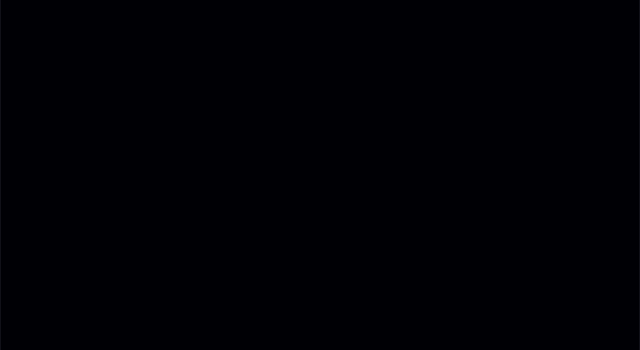
Exploring Mars Lessons
Get students engaged in the excitement of NASA's next mission to Mars with standards-aligned STEM lessons.
-

Meet JPL Interns of Mars 2020
Read stories about interns helping prepare NASA's next Mars rover for its launch this summer.
-
 Education Webinars
Education WebinarsTeaching Space With NASA
Watch education webinars featuring NASA experts and education specialists and register to ask questions during live Q&As. Plus, explore related education resources.
-

Exploring Mars Activities
Make a cardboard rover, design a Mars exploration video game, learn about Mars in a minute and explore more STEM activities for students.
-
 Resources for Families
Resources for FamiliesLearning Space With NASA at Home
Explore space and science activities students can do with NASA at home. Watch video tutorials for making rockets, Mars rovers, Moon landers and more. Plus, find tips for learning at home!
More Resources From NASA
TAGS: Mars, Perseverance, Mars 2020, Science, Engineering, Robotics, Educators, Teachers, Students, Teachable Moments, Teach, Learn, Mars Landing










